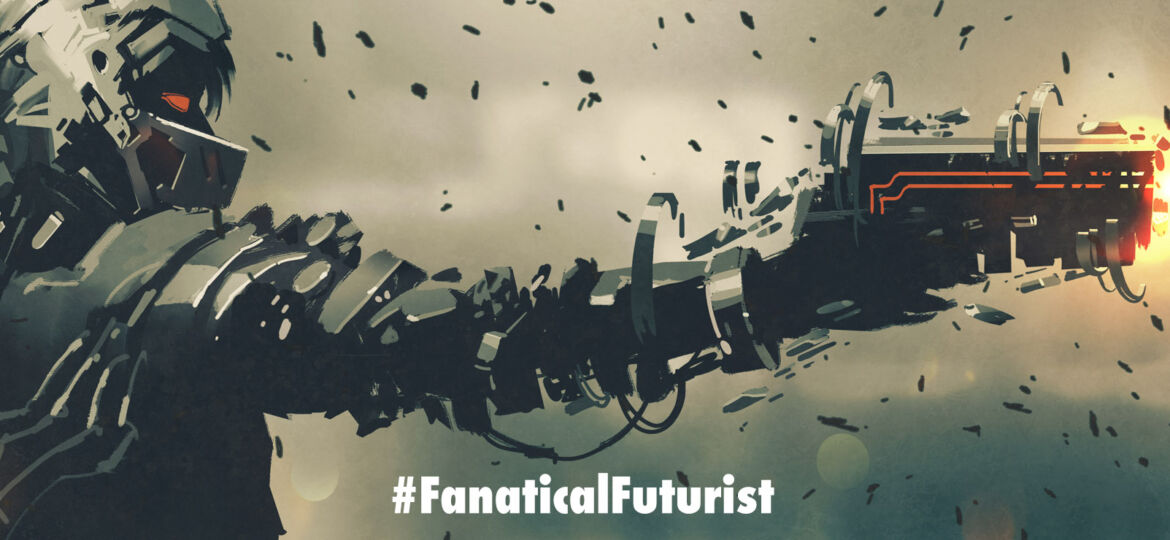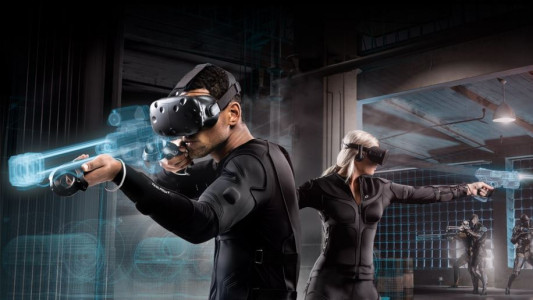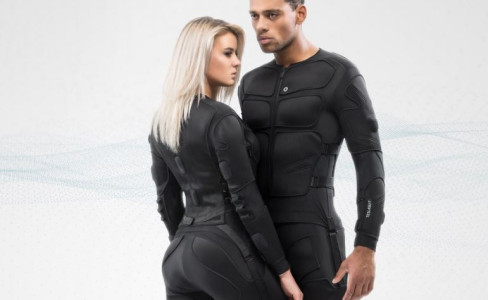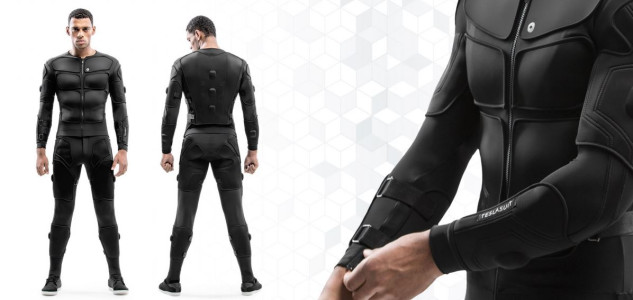
WHY THIS MATTERS IN BRIEF
Virtual Reality headsets are all well and good but they only give users a visual experience, and haptic suits literally let you feel everything.
 Interested in the future and want to experience even more?! eXplore More.
Interested in the future and want to experience even more?! eXplore More.
Following on from Disney’s haptic VR jacket, that let’s you “feel the force,” and the release of Plexus’ haptic gloves that let you touch virtual objects, one of the innovative future technologies that was on display at this year’s Consumer Electronics Show, CES 2019, in Las Vegas was the Teslasuit, a full body Virtual Reality (VR) haptic suit that lets them feel everything that goes on in the game or virtual world they’re in, so in other words, if they’re hit by a sniper in a game, kicked, punched, or even perhaps hugged, then they feel it. Similarly though, and adding a twist here, this same type of technology could also be combined with neurostimulation training to help hone an athlete’s technique or, when combined with AI even be used to train world class musicians. Think combinations young futurist, not just tech…
In a haptic feedback system users are subjected to stimuli that mimic real world sensations that involve touch, such as shocks, punches, pushes, bumps, and so on. Teslasuit then combines these with other environmental feedback, including climate control, motion capture, and biometric systems “to give a fully responsive, immersive experience to the user.” And when it’s combined with true-to-life VR graphics, like the ones promised by new metalense technology, the suit could finally give gamers the immersive VR experience they’ve long craved.
The full body sensations of the Teslasuit seem to indicate a new level of experience for virtual reality users, but the haptic capabilities aren’t the only things making it stand out. The suit’s biometric system is designed to use machine learning to analyze heart rate, stress levels, and overall mental and emotional states to create experiences catered to the user. But how this capability is going to be used is up to the games developers., and as data is gathered from biometrics, capabilities will follow.
“This is very important for the gaming industry. We see that in the future, when we come to the end user market, that we will be able to offer a lot of data sensing for the developers to process, for the AI itself to adjust the game to the player,” said Dimitri Mikhalchuk, co-founder of Teslasuit.
Courtesy: Teslasuit
Teslasuit uses 68 electrical channels embedded throughout the suit’s fabric to deliver electrical stimulations, and since its debut the company’s now working to expand on that number. Also included in the suit’s software is a haptic library, enabling game developers to create their own effects to correspond with their virtual worlds. The climate control system adjusts the temperature of the suit, heating and cooling in accordance with the virtual environment, and finally its motion capture and avatar tracking system makes sure the user is interacting with their environment in real time and in the right way.
However, while the Teslasuit brings virtual worlds closer to a potentially action-packed reality, bruises are not part of the experience, according to Mikhalchuk.
The electric stimulation is matched to the users own strength, adapting its responses to the input. In other words, the force a user “hits” within a game is the amount of force used to “hit” back, in other words, electric pulses make the muscles contract within that range.
With the equivalent of a full body shocking device wrapped around players, the question of security also arises, so the suit is protected from cyber attacks with military grade encryption that’s natively built into its wireless control system to ensure users’ bodies are not, literally, hacked into.
Among its many features, Teslasuit is also completely wireless, boasts a 10 hour battery life, and is machine washable, which is an important feature if users have been sweating it out in some combat game.
Other than gaming the company says there are plenty of other applications including astronaut VR training in an ISS module, an oil loading ramp operation VR simulator, emergency evacuation VR training, and a powerplant VR training simulator. But, excluding the astronaut training, gaming sounds more fun.




















[…] haptic technologies, that let you feel things that aren’t there like a hug from a remote friend or a rugby tackle from someone in another city, are always being worked into VR, and according to IFLScience, a […]